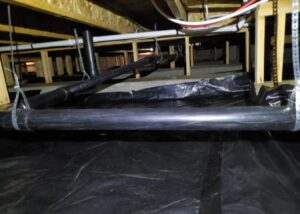The Best Design Software for Interior Designers of 2022

When a homeowner wants to make a change to their living space, whether it’s new paint, new furniture, or even a new floor plan, it’s a great benefit to be able to see beforehand what it will look like. Interior design software programs—also known as computer-aided design (CAD)—can be essential to an interior designer’s tool box in tackling big or small jobs, whether it’s for bedrooms, bathrooms, landscaping, kitchen makeovers, or transforming an entire home’s floor plan. The best design software for interior designers allows users to plot out their ideas while overhauling rooms, move around or add new furnishings and accessories, and sketch up homes and properties in a detailed way.
Pen and paper sketches don’t really cut it anymore, but realistic 2D or 3D visualizations can virtually show the possibilities. Home remodeling software or studio design software allows designers to experiment and view how these changes will look before any work starts. This can help avoid unexpected or costly surprises and ensure more satisfactory results in the final reveals of newly designed spaces or remodels.
- BEST OVERALL: SketchUp
- BEST BANG FOR THE BUCK: Floorplanner
- BEST FOR FLOOR PLANS: SmartDraw
- BEST FOR MOBILE USE: magicplan
- BEST BEGINNER SOFTWARE: Planner 5D
- BEST ADVANCED SOFTWARE: Chief Architect
What to Consider When Choosing the Best Design Software for Interior Designers
Interior design software isn’t one size fits all. The best choices often depend on a designer’s personal preferences. Also, designers will likely want to weigh the price, system software requirements, mobile app availability, and any extra tools the software comes with for designing spaces. Some of the best design software for interior designers may also assist with other tasks, like project management and estimating material needs and costs based on the renderings created.
Cost and Trial Period
Costs for interior design software can vary from $5 to $200 per month. Some house design software may even be free, and it’s likely designers can also find free graphic design software and free drafting software, though these free options often come with more limited features. Paid subscription plans may offer access to additional tools within the programs. For example, paid plans may have a more extensive digital library of furnishings and fixtures to add to designs, or they may include premade design templates that can be customized instantly. Some companies may offer trial periods to test their products before fully committing to a paid plan. Users can take advantage of these trial periods to judge the software’s ease of use and ensure it’s compatible with their computer, smartphone, or tablet (depending on how they prefer to access the program).
System Requirements and Mobile App Availability
Many of the best interior design software programs are web-based, and their use may be limited to desktop-only or even just a mobile app. Some programs may offer the ability to access the software both ways. These design software programs may be formatted to Mac or Windows platforms, and users will want to check that their computer is compatible with any programs they’re considering. Three-dimensional designs may require a more powerful computer- processing speed. Remote functionality or mobile access to software may be beneficial to designers who desire access to the program while on the go, such as when meeting with clients or contractors in the field. Several programs offer smartphone or tablet compatibility.
Visualizing Options
Design software takes interior design sketches and creates 2D or 3D renderings. CAD drawings can be converted to a 3D room design to offer a more photorealistic feel of the virtually designed space. These software programs also allow users to add paint colors, furniture images, flooring, and lighting for a realistic view of what a space will look like. In some cases, compatible virtual reality headsets also may be used for a more immersive virtual walk-through of the rendered designs. Other programs can create 2D drawings of floor plans. Two-dimensional programs can be beneficial for displaying length and height on a flat surface. Interior design software in 3D then adds the element of depth to these renderings.
Collaboration Possibilities
Online interior design programs can make it easy for users to collaborate on projects, export the designs or floor plans, or share with clients or contractors. Many of the best interior design software programs allow live editing and the ability for users to drag-and-drop objects or even remove or add walls and doors to change up spaces instantly. Several designs can be created from one base design to offer more options. The programs can be used to give clients more input in the design process and to sign off on virtual renderings to help avoid any disappointment in the finished project once the work is completed.
Integration With Other Software
Designers will want to consider how well the interior design software or the drawings integrate with other software they often use in their business. For example, programs may be compatible with Microsoft Office or Google Workspace, allowing renderings to be easily uploaded and included in documents or presentations. Interior designers may also want a program that integrates with their existing photography or project management software or other tools they often use.
Tutorials and Learning Resources
Designers may find there’s a learning curve when using certain sketch or design programs. Many design software options provide access to training guides to aid in learning these programs and obtaining all their benefits. Tutorials, training guides, webinars, and live instruction can help make learning these programs easier. Live instruction specifically allows for troubleshooting any problems as they arise while using the programs.
Our Top Picks
This roundup factors in costs, trial period offerings for testing out programs, system requirements, mobile app availability, and what kinds of learning resources to are offered to master their use. Here are our top-rated choices.

Photo: sketchup.com
Why It Made the Cut: SketchUp is a 3D modeling computer program for drawing and design that allows designers to fully customize their work space for ultimate functionality, no matter the job.
Designers can create drawings of 2D floor plans and turn them into fully customized 3D models with SketchUp. Furniture, accessories, paint additions, flooring, lighting, and more can then be added to provide a more realistic view when designers or clients are visualizing the space. Users can download extensions to customize their work spaces to match their personal preferences. The program can be used to create 3D designs where clients can actually walk through any renderings by wearing a virtual reality headset for an immersive experience.
SketchUp users may find it cumbersome to have to draw designs from scratch, as that could slow the design process. But the program takes steps to make it easy to learn with an intuitive interface. Users can connect with live instructors and access tutorials to troubleshoot any issues. SketchUp offers unlimited cloud storage, which is included with all subscription plans, so designers can save as many designs as needed. All subscription plans also cover use of SketchUp’s web-based program for its iPad and desktop software for Windows and Mac computers. SketchUp provides a generous 30-day trial to test out the program before committing to one of its three paid subscription plans, or users can try out the free browser-based version of SketchUp.
Specs
- Cost: Free; $119, $299, or $699 annually
- Trial period: 30 days
- System requirements: Windows 10, 11; macOS 10.15 and higher
- Mobile app availability: Yes (iPad only)
- Learning resources: Instructors, video tutorials, blog, user forum
Pros
- Fully customizable work space
- Unlimited cloud storage with all subscription plans
- Generous free 30-day trial
- Live instructors available for learning support
- iPad and desktop software available with all subscription plans
- Free browser-compatible software
Cons
- No templates or premade object renderings included

Photo: floorplanner.com
Why It Made the Cut: Floorplanner offers free and affordably priced subscription plans, starting as low as $5 per month, to virtually design interior spaces in 3D.
Designers can produce a realistic 3D rendering of a room from a 2D floor plan with Floorplanner. First, users can import an existing drawing or start from scratch using the software’s drag-and-drop interface. Then, they can access Floorplanner’s extensive library of over 150,000 renderings to drop 3D objects into designs. Options also include decorating an entire room in just one click. The software allows the online sharing of designs to customers.
However, some may view Floorplanner as having relatively limited design possibilities since users can only draw one floor plan at a time. Those looking for the most features will want to step up from its free version to one of its paid subscription plans. Floorplanner offers two monthly subscriptions at $5 or $25 per month. Floorplanner is compatible with every web browser and has a mobile app for accessing it from anywhere.
Specs
- Cost: Free; $5 or $25 monthly for individual users
- Trial period: N/A
- System requirements: Web-based
- Mobile app availability: Yes
- Learning resources: Video tutorials, webinars, blog
Pros
- Free and relatively affordably priced plans available
- Compatibility with every web browser
- Over 150,000 3D furniture and decor renderings included
Cons
- Relatively limited design possibilities with free plan

Photo: smartdraw.com
Why It Made the Cut: SmartDraw offers a wide assortment of premade templates that can be beneficial for creating detailed, customizable 2D floor plans and designs.
SmartDraw delivers ultra-polished renderings with user-friendly features like automatic alignment, formatting, and coloring for professional displays of 2D drawings. It’s a good tool for beginners but also has plenty of features that more advanced designers can use when tackling complex projects. The software automatically aligns the floor plans to the page, adds coloring, and formats consistently so that users don’t have to do the extra work. Users can take advantage of hundreds of templates and design examples to get started. Drag-and-drop tools can be used for inserting furniture, art, landscapes, and more.
SmartDraw does not offer a mobile app, which may be limiting if designers desire to use the software while on the go. But SmartDraw does have seamless integration with Microsoft Office and Google Workspace, which makes it easy to upload renderings and include them in documents or presentations. The program can be used on Windows or Mac computers.
Specs
- Cost: $9.95 monthly for individual user
- Trial period: 7 days
- System requirements: Windows 7, 8, 10, Vista; macOS 10.14 and higher
- Mobile app availability: No
- Learning resources: Video tutorials, blog
Pros
- Seamless integration with Microsoft Office and Google Workspace
- Wide assortment of premade floor plan templates available
- Ultra-polished renderings thanks to automatic alignment, formatting, and coloring
Cons

Photo: magicplan.app
Why It Made the Cut: Magicplan is designed specifically as a mobile app, giving designers the freedom to take their software with them wherever they go.
Design, plan and visualize floor plans with Magicplan’s mobile-first software. Users can create and work in 2D drawings. Magicplan does not have a desktop or browser version, which could limit some flexibility in using it, particularly if designers prefer to work from a larger desktop computer screen. Users will need to use a smartphone or tablet to access the app. But that allows them to easily collaborate and access it wherever their day takes them, such as when meeting clients or contractors in the field.
When using the mobile app, designers can create and share sketches, build field reports, and compile estimates for customers or contractors based on the design projects they create. Magicplan includes a built-in reporting and estimating feature that makes it easy to turn drawings into estimates and reports.
Specs
- Cost: $9.99, $29.99, or $89.99 monthly
- Trial period: No time period specified; maximum 2-plan creation
- System requirements: iOS, Android
- Mobile app availability: Yes
- Learning resources: Webinars, user forum, blog
Pros
- User experience optimized for mobile use
- Convenient built-in reporting and estimating features
Cons
- No desktop or browser version

Photo: planner5d.com
Why It Made the Cut: Planner 5D offers a beginner-friendly interface for those learning the ropes of CAD software in turning 2D floor plans into 3D designs.
Planner 5D can be a great choice for those new to interior design software. It provides easy-to-learn tools and can be a great introduction to design software by not overwhelming users with too many different features all at once. The interface is streamlined and easy for designers to navigate when drawing 2D floor plans, which can then be rendered into 3D images. There is still enough functionality for users to create more complex designs as they gain more familiarity and comfort with the program.
Planner 5D offers photorealistic renderings in 3D with the Snapshots feature. It automatically adds shadows and depth to make models look more professional without any extra work on the user. Users will want to evaluate the subscription plans carefully; a free trial is only available for iOS and macOS versions. Planner 5D touts that it’s free, but the free version is limited, and users will find they may only be able to complete basic drawings with it. Designers will need a paid plan to complete simple tasks like exporting the designs they create, and Planner 5D’s paid versions offer more functionality.
Specs
- Cost: Free; paid versions available
- Trial period: 3 days
- System requirements: Windows, macOS, iOS, Android
- Mobile app availability: Yes
- Learning resources: Video tutorials
Pros
- Beginner-friendly interface and functions
- Photorealistic renderings with Snapshots feature
Cons
- Somewhat misleading pricing information
- Free trial only available for iOS and macOS versions

Photo: chiefarchitect.com
Why It Made the Cut: Chief Architect can be used as a construction design software that offers advanced capabilities in crafting highly detailed, customized interior and exterior residential designs.
Chief Architect offers features that may be ideal for interior designers who are working closely with construction managers or architects. It offers details and precision in creating 360-degree panoramic renderings. Users can create construction drawings that include elevation, cross-sections, and structural framing. Live instructors can connect with users to teach the ins and outs of using the software and troubleshoot any issues that arise. Also, users can access video tutorials, webinars, and live classroom courses.
Chief Architect does not offer a mobile app and is limited to desktop-only use. The software has higher up-front costs than many other CAD programs: It must be purchased outright for a one-time fee, or it can be rented for a monthly fee. But Chief Architect can be a good option for those looking for a powerful building and design tool that can allow multiple views on projects, including virtual tours. Users can export and share their 3D plans, and the program automatically compiles a list of materials that will be needed in developing the design.
Specs
- Cost: $199 monthly or $2,695.50 for Premier version
- Trial period: No time period specified; limited functionality
- System requirements: Windows 10, 11; macOS 11 and higher
- Mobile app availability: No
- Learning resources: Instructors, live classroom courses, video tutorials, webinars
Pros
- Advanced capabilities for detailed interior and exterior residential design
- Live instructors available for learning support
Cons
- No mobile app
- Relatively high cost
Our Verdict
We selected SketchUp as our top pick for best interior design software because it allows users to turn 2D floor plans into fully customized 3D models that can be virtually toured. SketchUp also includes unlimited cloud storage for saving designs and a generous 30-day trial period to test out the program before committing. We also appreciate Floorplanner’s budget-friendly prices and free version, which makes interior design software more accessible.
How We Chose the Best Design Software for Interior Designers
For this guide, we reviewed numerous design software to pinpoint the best. We judged software by its ease of use and intuitive interfaces. We considered options that fit a variety of budgets. All the software included in this roundup is for drafting and designing purposes and is geared toward creating 2D or 3D software for interior design. Some of the software also may have additional features that help with project management or generate price estimates for materials and labor needed to complete the rendered design projects.
Before You Use the Best Design Software for Interior Designers
Many types of industry-standard software can be beneficial to professional interior designers for planning out their projects. But the best online interior design courses—like those offered by an organization, college or university—can help professionals wishing to pursue a career by teaching fundamental design skills and offering practical experience that can help them first master the principles of design. CAD software and virtual interior design tools are added items in a designer’s tool box.
Cost of Using the Best Design Software for Interior Designers
Design software for interior designers varies in scope and, therefore, so do the costs. Costs can range from free—likely with more limited features—to monthly plans starting out as low as $5 or up to $199 per month or more. Some plans also allow users to purchase the software outright or for a one-time fee. Designers who are uncertain of which program is best for them may want to take advantage of complimentary trial periods offered by some software programs. This allows designers to experiment with the program while narrowing their search for the best interior design software for their purposes.
The Advantages of Using the Best Design Software for Interior Designers
The best design software can offer several benefits to interior designers and home stagers in creating visual representations of floor plans and designs.
- Photorealistic design renderings in 2D or 3D can be presented to clients. These offer a more representative and detailed look at what the finished design will look like before any physical work is started.
- Visual representations allow furniture, accessories, paint colors, fixtures, and more to be swapped in and out. Adaptable floor plans can create multiple design options of the same space instantly.
- Designers can test out ideas before putting them into action, ensuring fit, gathering client approvals, collaborating on the design, and accessing tools to gauge costs to reach a desired finished product.
FAQs
Because of the abundant choices, choosing the perfect interior design software can be a tough decision. There are several system requirements to consider, personal preferences of 2D versus 3D sketches, and how user-friendly the program is for professional use. Here are a few commonly asked questions.
Q. What type of PC should I have for running interior design software?
This will greatly depend on the type of software you’re purchasing. More advanced software—often those that do 3D modeling—will likely have greater system requirements than programs geared to 2D renderings. Consider the complexity of the projects and the cloud-storage services the programs offer, which could help limit needed space on your hard drive.
Q. What should you look for in interior design software?
Consider the complexity of the projects you’re planning and whether you prefer 2D or 3D renderings. Other factors may include the availability of high-quality digital product libraries for accessorizing floor plans and layouts, how photorealistic the renderings are, the presentation and project-sharing capabilities, and the availability of tech support and training.
Q. Is interior design software worth the money?
Interior design software can be indispensable to designers as they plan, organize, and decorate spaces. The software can be used to collaborate with clients in determining the right design before committing to pricey projects. Many affordable options exist, including free software as well as pricier subscription-based models that may offer extra features when designers are tackling more complex jobs.
Q. What is interior design software?
Interior design software helps create visual room layouts to present drawings or realistic representations of remodeled spaces. Many options also include drag-and-drop features to bring accessories and furnishings into premade floor plan templates that can then be customized. These programs also may offer the capability to reimagine layouts by adding walls, windows, doors, and more.
Q. What types of software do interior designers use?
Interior designers have multiple options for designing, planning, and remodeling spaces, such as with some of the best home design software, photography programs, and project management software. CAD (computer-aided design) software can be an added tool that designers use to alter spaces virtually in experimenting with and judging designs before putting ideas into action.










